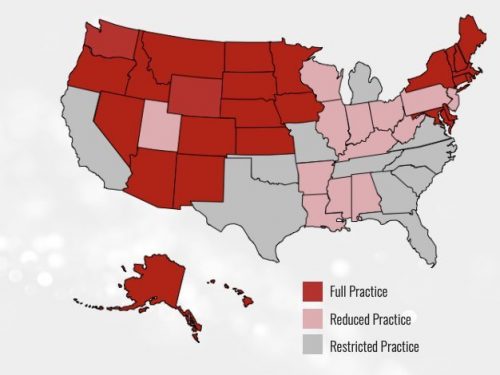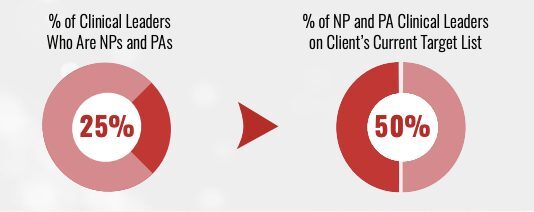Nurse Practitioners (NPs) and Physician Assistants (PAs) are increasingly central to healthcare delivery, bridging gaps in access, especially in underserved areas. Their growing responsibilities, including diagnosing, managing patient care, and prescribing, highlight a shift in healthcare clinical leadership and HCP engagement strategies. The importance of Nurse Practitioners (NPs) and Physician Assistants (PAs) continues to grow. Below are some key areas of change and what they mean for the future of HCP engagement.
| CONTEXT |
As of April 2022, the United States had 355,000 licensed nurse practitioners and 118,599 physician assistants, close to the estimated number of primary care physicians in the country. The number of nurse practitioners and physicians assistants continues to rise, eclipsing the number of primary care physicians.

| DRIVERS |
1. PRESCRIBING POWER
-
More than half of US states/territories adopted Full Practice Authority (FPA) legislation, which enables Nurse Practitioners to provide the full scope of services they are educated and clinically trained to provide
-
13 states have Reduced Practice Authority, in which laws reduce the ability of nurse practitioners to engage in at least one element of NP practice
2. PARTNERSHIPS WITH BIOPHARMA
- In July 2022, The Centers for Medicare and Medicaid Services started to publish open payments from Nurse Practitioners and Physician Assistants, as well as Clinical Nurse Specialists, Certified Registered Nurse Anesthetists, Anesthesiologist Assistants, and Certified Nurse-Midwives. This will provide information on current biopharma relationships and willingness to engage.
3. GROWTH
- Nurse Practitioners and Physician Assistants are becoming increasingly specialized, and their numbers are expected to grow steadily – annual growth estimates from 2016-2030: NPs: 6.8%, PAs: 4.3%, and physicians: 1.1%

| IMPACT |
Now, more than ever, it is critical to identify Nurse Practitioners and Physician Assistants who are Clinical Leaders driving regional and local treatment practice, as they increasingly influence decision-making in patient care. 81qd can help you to expand your clinical leader network mapping to include Nurse Practitioners and Physician Assistants who are Clinical Leaders with the Plexus HCP targeting software.
| CASE STUDY |
In one disease area, 81qd’s Plexus Clinical Leader analysis found that close to 25% of Clinical Leaders were nurse practitioners and physician assistants, but only 50% of them were on the client’s current target list – a clear missed opportunity.
Learn more about 81qd’s data analytics solutions below.





